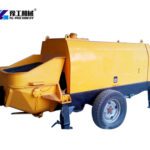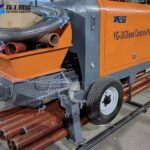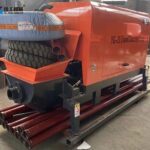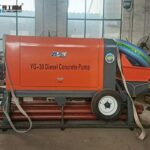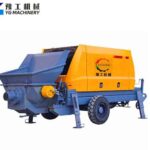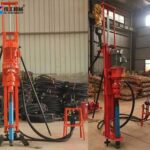Small concrete pump, often referred to as a mini concrete pump or a portable concrete pump, is a specialized machine designed to transfer liquid concrete through a system of pipes and hoses from a mixing source to a specific placement area. It stands in stark contrast to its larger, truck-mounted cousins, offering unparalleled accessibility and versatility for projects where space is constrained or the scale does not warrant a massive industrial vehicle. Imagine a construction project where concrete flows smoothly and precisely to its destination, defying gravity and distance with quiet efficiency. The very existence of this category of equipment democratizes concrete work, making it feasible for smaller crews and projects to achieve professional-grade results with enhanced speed and significantly reduced labor intensity.
Features of Small Concrete Pumps
The design of a small concrete pump integrates several critical features that contribute to its efficiency and operational excellence:
- Compact and Portable Design: The most distinguishing feature is their size. They are often trailer-mounted, making them easy to tow and position on congested construction sites. This mobility is a major asset for urban projects or remote locations.
- Versatile Power Options: Manufacturers offer models powered by electric motors or reliable diesel engines. Electric pumps are quieter and zero-emission, perfect for indoor or noise-sensitive areas, while diesel pumps offer unmatched power and independence from site electrical supply.
- High Pumping Pressure: Despite their size, modern small concrete pumps can generate significant pumping pressure. This allows them to effectively convey concrete vertically up several floors or horizontally over long distances, making them suitable for mid-rise structures and difficult-to-reach areas.
- Adaptability to Aggregates: These pumps are typically designed to handle fine aggregate concrete, which is common in many construction applications like floor screeds, grouting, and secondary column pouring.
- Simplified Operation: Modern small pumps incorporate user-friendly controls and clear operating procedures, making them relatively simple for trained personnel to run, minimizing the learning curve and potential for operator error.
Primary Applications and Versatile Uses
The utility of a small concrete pump extends across a broad spectrum of construction activities. Their precision and maneuverability make them indispensable in various scenarios:
1. Residential and Small-Scale Projects: Pouring house foundations, driveways, patios, and retaining walls, especially in backyards or properties with limited road access.
2. Secondary Structure Construction: Pumping fine aggregate concrete into concrete columns, beams, and ring beams in multi-story buildings, a task that is labor-intensive and messy with traditional buckets.
3. Grouting and Filling: Used for precise grouting of anchors, filling voids under roads or foundations, and stabilizing geological formations.
4. Floor Screed and Insulation: Efficiently conveying self-leveling floor screeds, mortar, and lightweight foamed concrete for floor heating and insulation purposes.
5. Tunnel and Mining Applications: Delivering shotcrete or concrete mix for tunnel lining and support in confined underground environments.
6. Repair and Restoration: Ideal for repair work on bridges, historical structures, or infrastructure where precise and controlled concrete placement is required.
Working Principle of Small Concrete Pump
- The operation of a small concrete pump is based on hydraulic power and piston movement. When the pistons in the pumping cylinders move backward, concrete from the hopper is drawn into one of the cylinders. Simultaneously, the other cylinder pushes concrete through the outlet and into the pipeline.
- The S-valve then switches positions, alternating between suction and discharge. This cycle continues rapidly, allowing a smooth, continuous flow of concrete to the pouring site.
- This simple yet efficient mechanism ensures consistent delivery even in narrow spaces, high-rise buildings, or areas with limited access for large trucks.
How to Choose Small Concrete Pump?
Choosing the right model is essential to maximize performance and return on investment. Here are key factors to consider:
- Concrete Output
Determine how much concrete you need to pump per hour. Common capacities range from 20 to 50 cubic meters per hour. - Delivery Distance
Consider the vertical and horizontal distance to be covered. Choose a pump with sufficient pressure to handle the project’s requirements. - Power Source
You can choose between a diesel small concrete pump and an electric small concrete pump. Diesel models are ideal for outdoor or remote projects, while electric versions suit urban sites with an available power supply.

